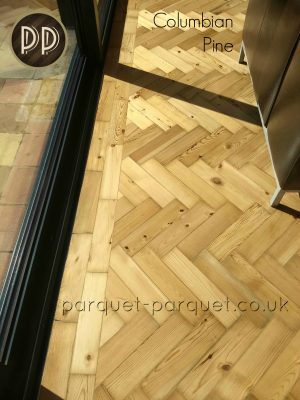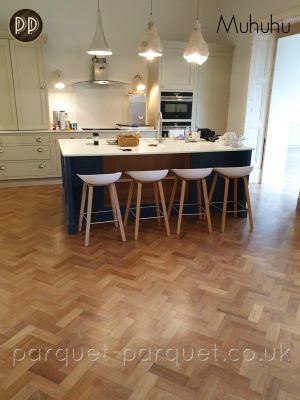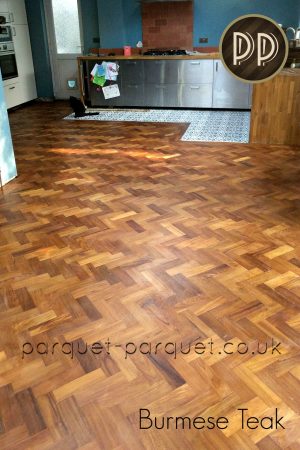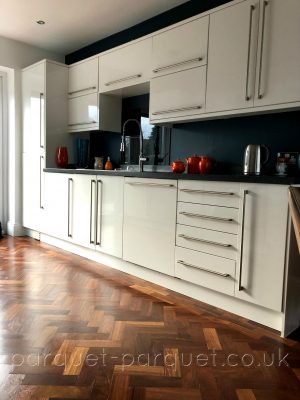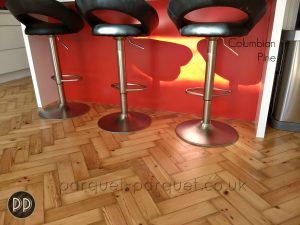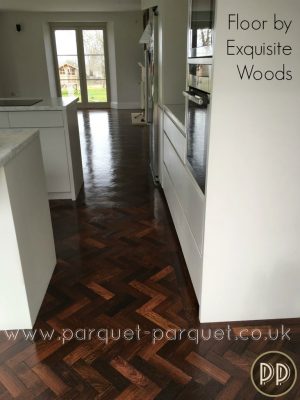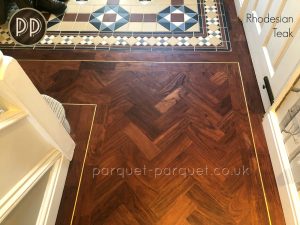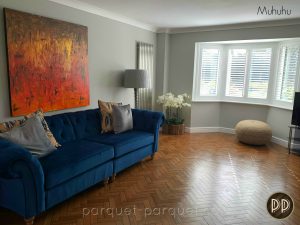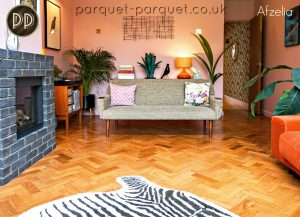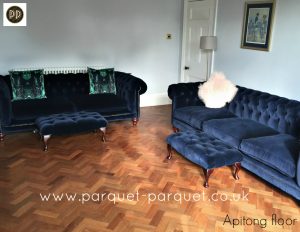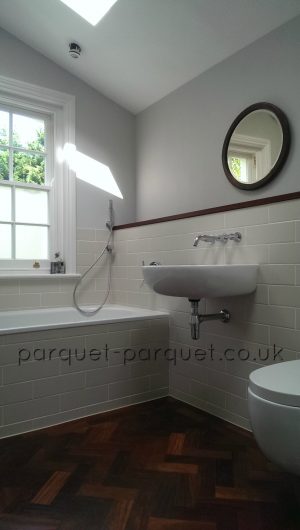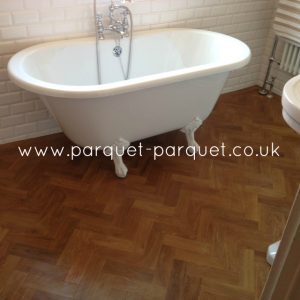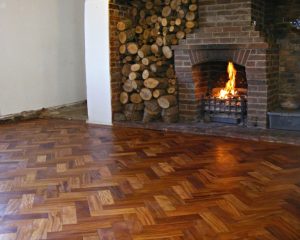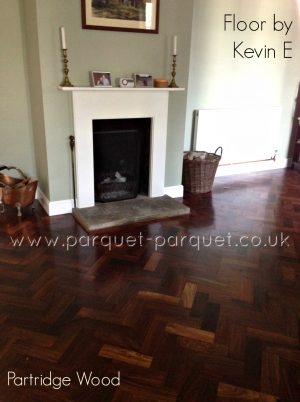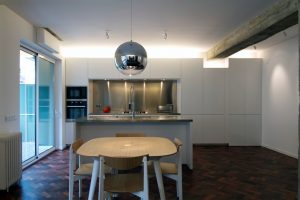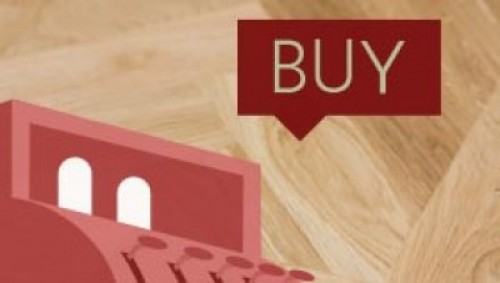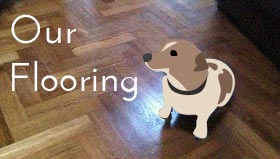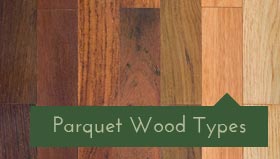Inspiration
Inspiration – this is the page for helping you to get inspiration to go for a reclaimed parquet floor.
We want to showcase the idea that parquet can look modern or traditional using a variety of visual images of our supply parquet. This is especially aimed at our retail customers, with a view to giving some inspiration for your own project.
Kitchens, bathrooms, hallways and sitting rooms – you can lay parquet flooring pretty much anywhere. It’s not that the flooring is simply wood, in fact it is all about what the top-coat and the species are. With the right surface and wood type, parquet can be used in most environments.
The photos so you can see those finished floors.
The flooring in the photos has mainly been fitted by our recommended fitters. Some customers occasionally do it themselves however in other examples the floor has been fitted by the customer’s fitter. We run a competition three times a year to encourage you parquet fans to send in your finished floor pics. The prize is a local cheese hamper or local wine. It actually comes from Lincolnshire to show our support for ‘buying local’ first.
We therefore hope that this will give you the inspiration you need to consider reclaimed parquet flooring. And if you want to look further please click here to see what we have currently available for sale.
Enjoy the inspiration!
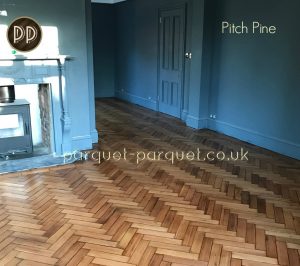
Pitch Pine used imaginatively in a period house. This looks amazing with the bold walls and woodwork.
Read More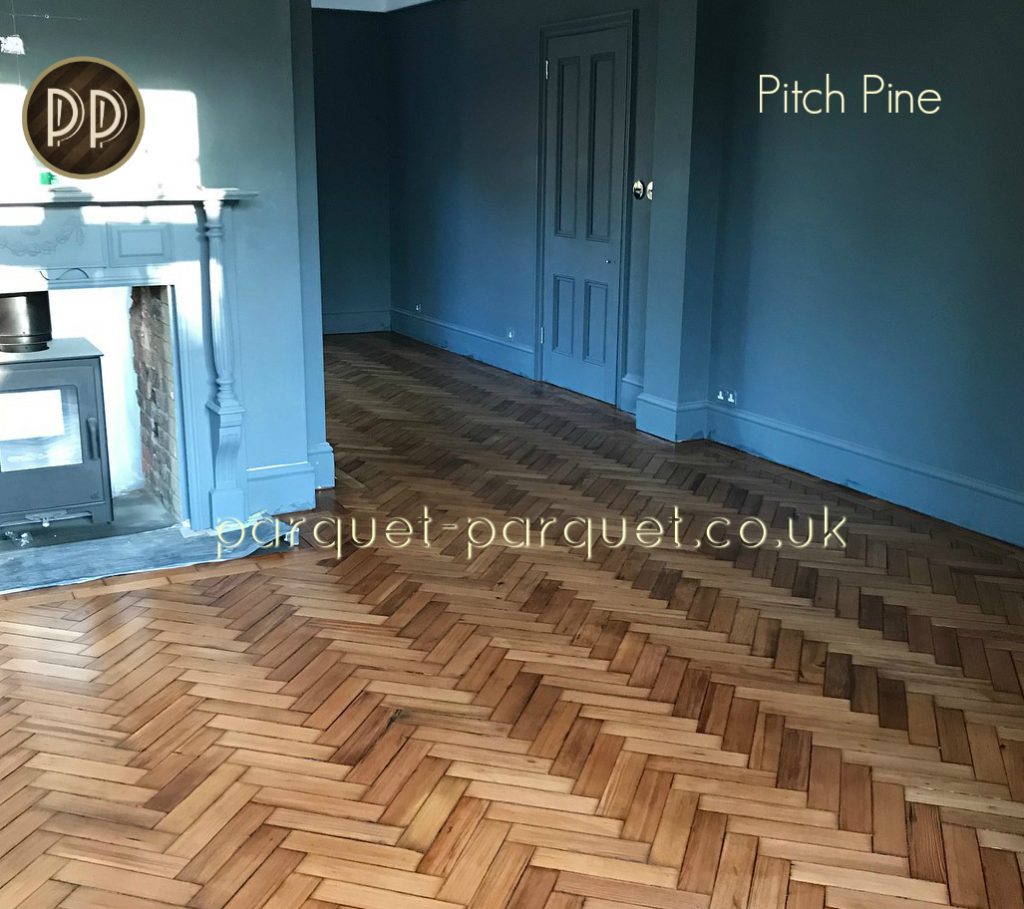
Pitch Pine used imaginatively in a period house. This looks amazing with the bold walls and woodwork.
Reclaimed parquet flooring:
Pitch Pine (Pinus spp)
This species comes from a group of heavier, harder pines known collectively as Pitch Pine. These originate from the Baltic and North America (both Canada and the United States). All are long-leaf pines with needles of about 7 to 8 inches in length.
Pitch Pine was imported from the Baltic regions into the port of Hull from the 16th century onwards. During that period, it was used for beams and floorboards in place of oak. Eventually it was used for parquet, most…
Read More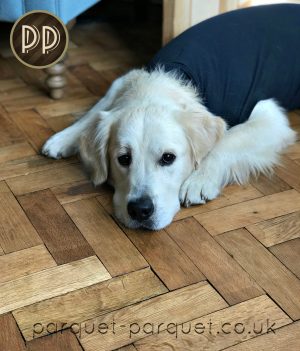
English Oak - and who could resist Rufus? A lovely Oak with an interesting history, makes a floor to be proud of.
Read More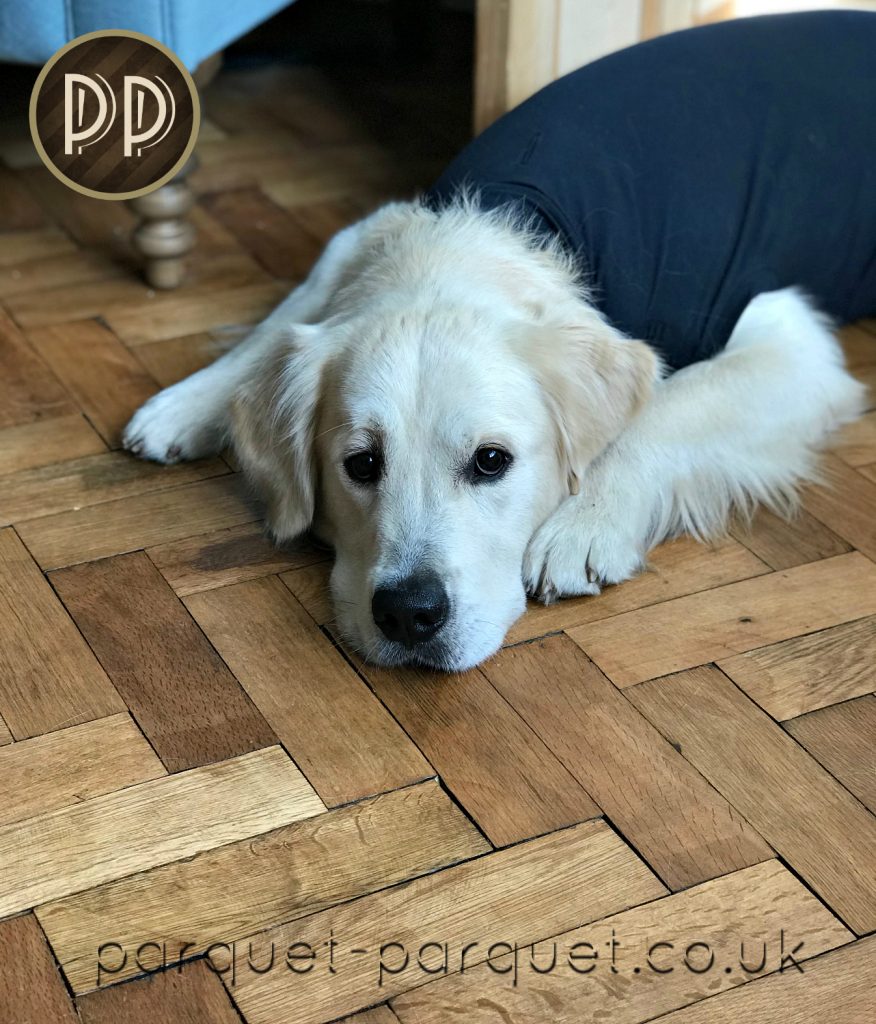
English Oak - and who could resist Rufus? A lovely Oak with an interesting history, makes a floor to be proud of.
Reclaimed parquet wood block:
European Oak (Quercus robur)
An excellent quality timber, European Oak is a very versatile wood. A Europe-wide species, typically grown in Britain, France and Germany as well as the Balkans. Much of the reclaimed parquet that becomes available will be native to Britain. Old parquet floors will have a lot more character than modern ones. It was traditionally ‘slow-grown’ which is what gives the character and grain so familiar to us, known as English Oak.
Oak Characteristics
The colour of the timber is…
Read More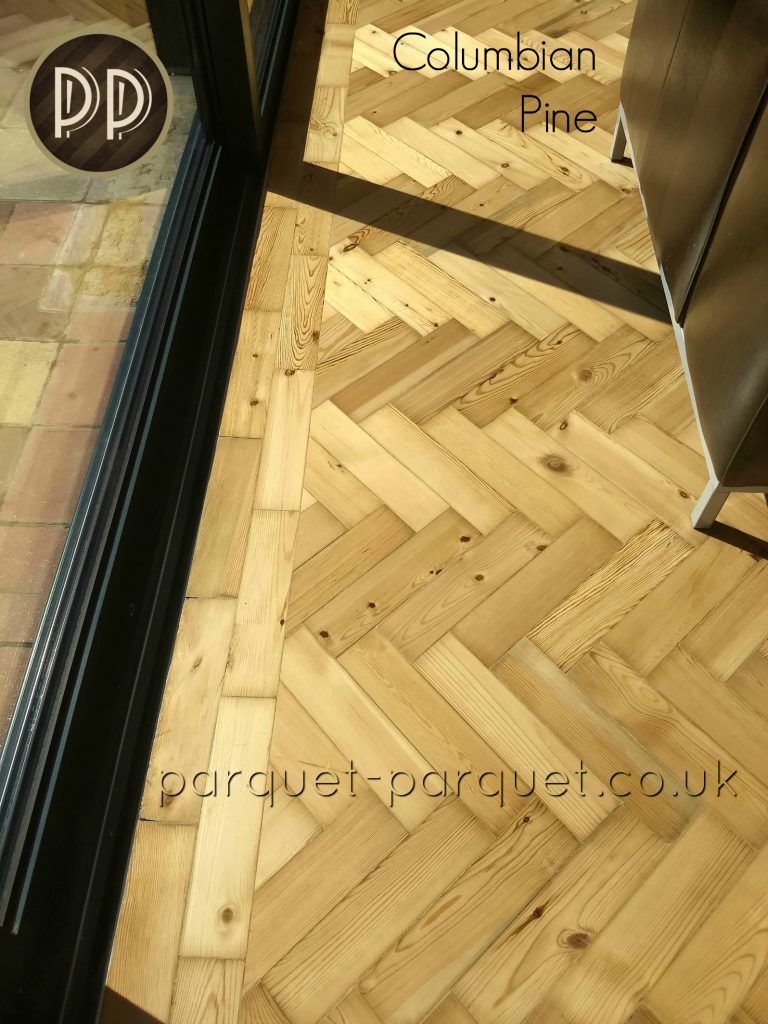
Columbian Pine, so beautiful next to the bi-fold doors, how well that works!
Reclaimed parquet flooring
Columbian Pine (Pseudotsuga menziesii)
Columbian Pine known as Douglas Fir, as well as Oregon Pine. It refers to British Columbia in Canada. It is an abundant timber, widely grown in North America i.e. Canada and United States. Named after Scottish botanist David Douglas, although the scientific name is for Archibald Menzies, who first described the tree in the 1790s.
The trees grow up to 200 ft ( 60 m), even as high as 300 ft in North America with a diameter of up…
Read More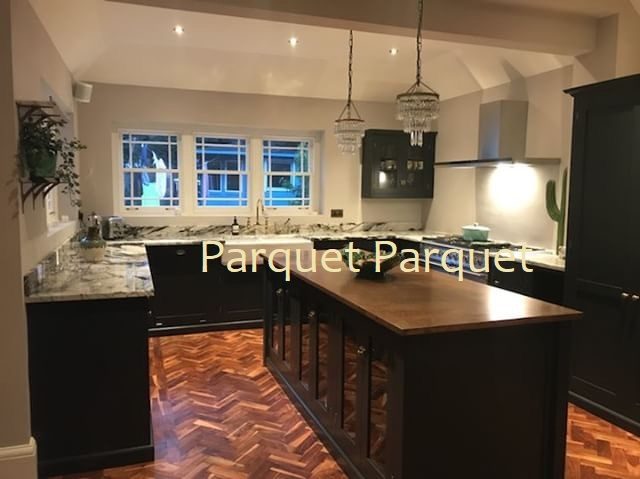
Stunning Rhodesian Teak in a kitchen. This one had some variegation on the edges which gave it a striking boldness.
Read More
Stunning Rhodesian Teak in a kitchen. This one had some variegation on the edges which gave it a striking boldness.
Rhodesian Teak
Rhodesian Teak (Baikiaea plurijuga) is a very handsome parquet is from Central Southern Africa. Grown in Angola, Botswana, Namibia, South Africa and Zimbabwe. Also known as Gusi and Mukusi as well as Zimbabwe Teak or Zambesi Redwood. It is not true teak (tectona grandis), it is something far better looking.
We find it in buildings dating from the 1920s to 1950s after which it seems to have gone out of parquet fashion. However lately we see it being used a lot, especially commercially,…
Read More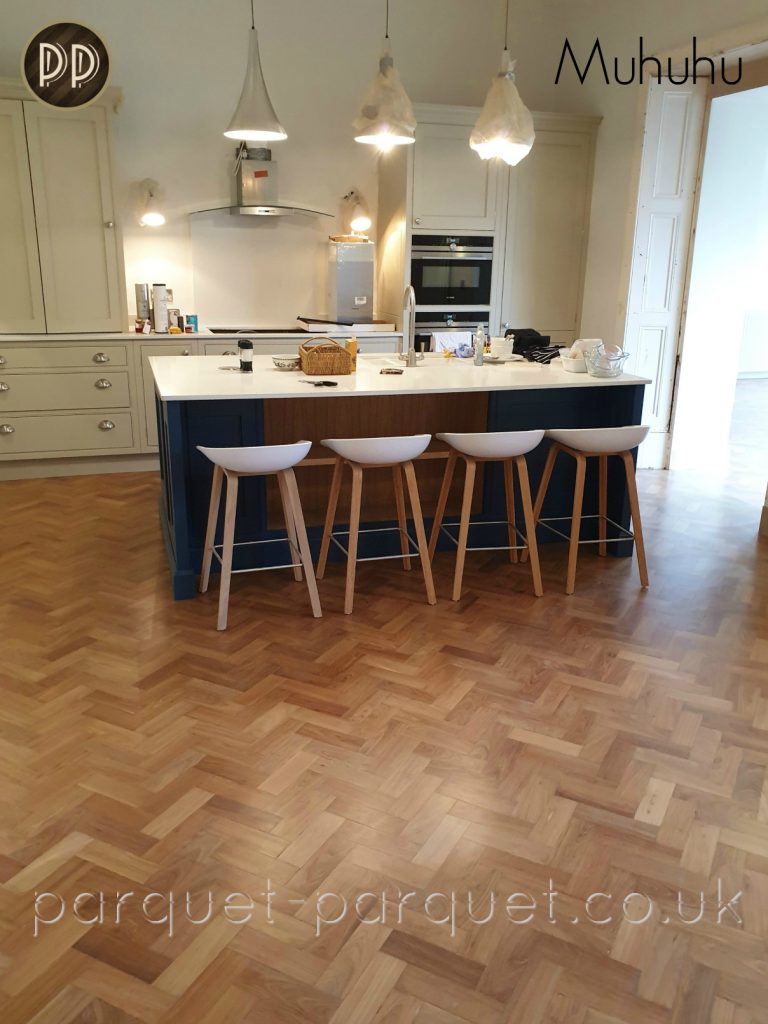
Muhuhu looking so elegant and stylish, in a kitchen family room.
Reclaimed parquet flooring
Muhuhu (Brachlaena hutchinsii)
Muhuhu is a species of tropical hardwood from Africa. The main countries of distribution are Kenya, Tanzania and Uganda. In addition the range does extend as far as Angola. Also known as Silver Oak, Muhugwe and Kipugupugo.
This species is on the IUCN Red List and classified ‘Rare’ within its natural growth range in Uganda. Listed as ‘endangered’ due to a tree population reduction of over 50% in the past three generations. A decline in the natural range of growth,…
Read More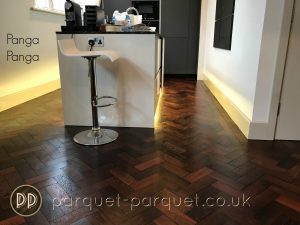
Panga Panga. Such a striking wood, very popular but hard to find. This looks amazing with a contrast of clinical white.
Read More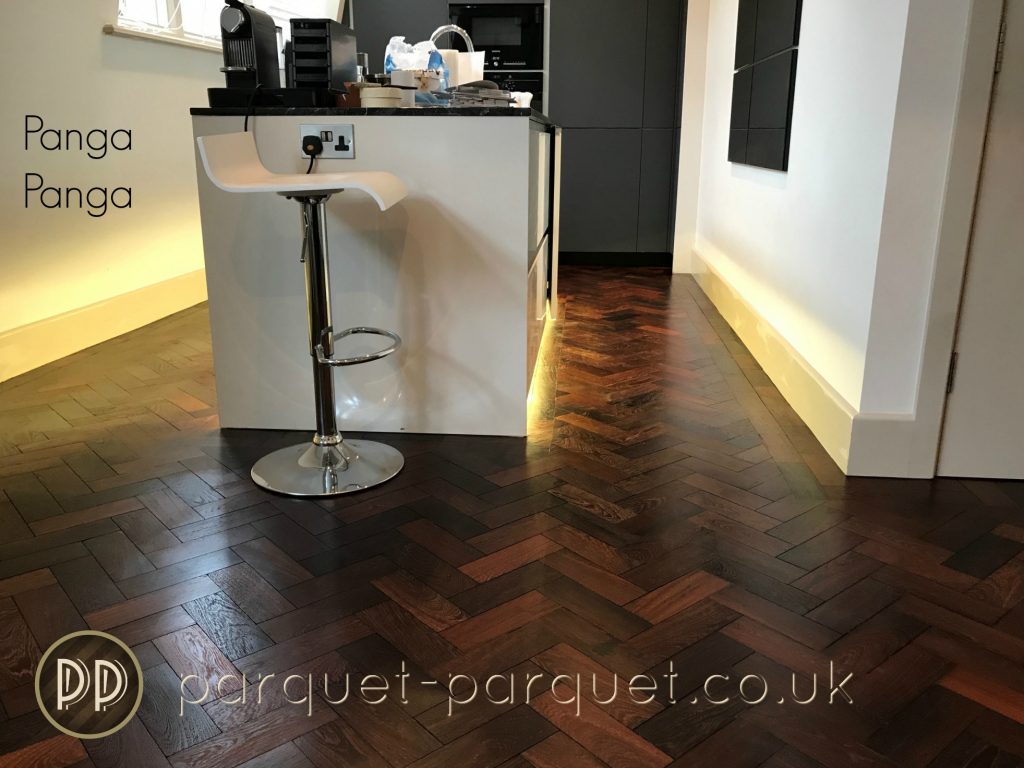
Panga Panga. Such a striking wood, very popular but hard to find. This looks amazing with a contrast of clinical white.
Reclaimed parquet flooring:
Panga-Panga (Millettia stuhlmannii)
Panga-Panga is from East and South-East Africa (Congo, Kenya, Mozambique, Tanzania, Zimbabwe). This species is sometimes confused with its cousin Wenge (pronounced Wengay). Wenge is very similar in appearance, but grows in West and Central Africa.
When reclaiming parquet in the UK, we tend to find Panga-Panga as opposed to Wenge, because it comes from the parts of Africa that were formerly British colonies. We find it was used in late 1950s and early 1960s buildings. It seems to have…
Read More
Burmese Teak, in a kitchen. Wonderful.
Reclaimed parquet flooring:
Burmese Teak (Tectona grandis)
Burmese Teak also known as Burma Teak is indigenous to the tropical forests of southern and south-eastern Asia: areas such as India, Myanmar and South-East Asia. Teak was also introduced as a plantation crop into tropical Africa. This introduction was mainly by German colonialists, initially in Nigeria, Tanzania and Ghana during the late 19th century, and later plantations into Cameroon and Togo.
To ensure that the great forests are not destroyed, Teak has become a controlled timber. Consequently it is one…
Read More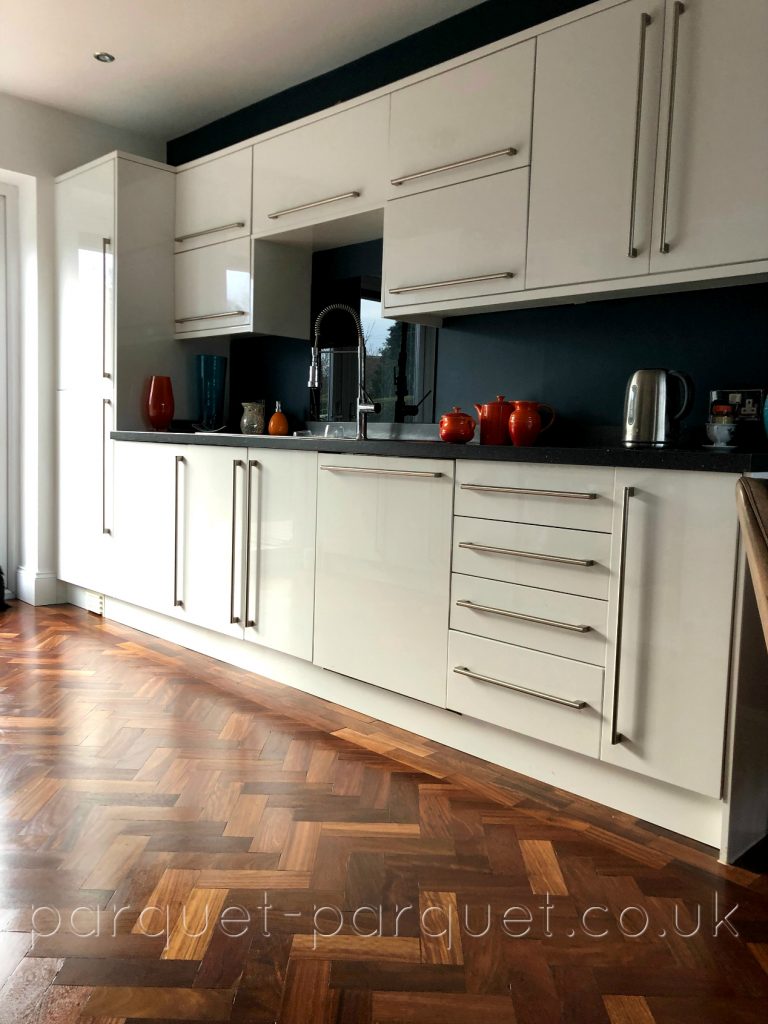
Partridge Wood looking striking in a modern kitchen
Reclaimed parquet flooring:
Partridge Wood (Andira Inermis)
Partridge Wood comes from South America, Central America (including the West Indies). As well as from West Africa – Ghana and Nigeria in particular. Rarer and better grown wood types were available during the era of the British Empire. Many of those slow grown species were imported to Britain and this is one of them!
This wood is also known by the name Angelin, West Indian Walnut, Yaba and Cabbage Bark amongst many, many others. It grows to a…
Read More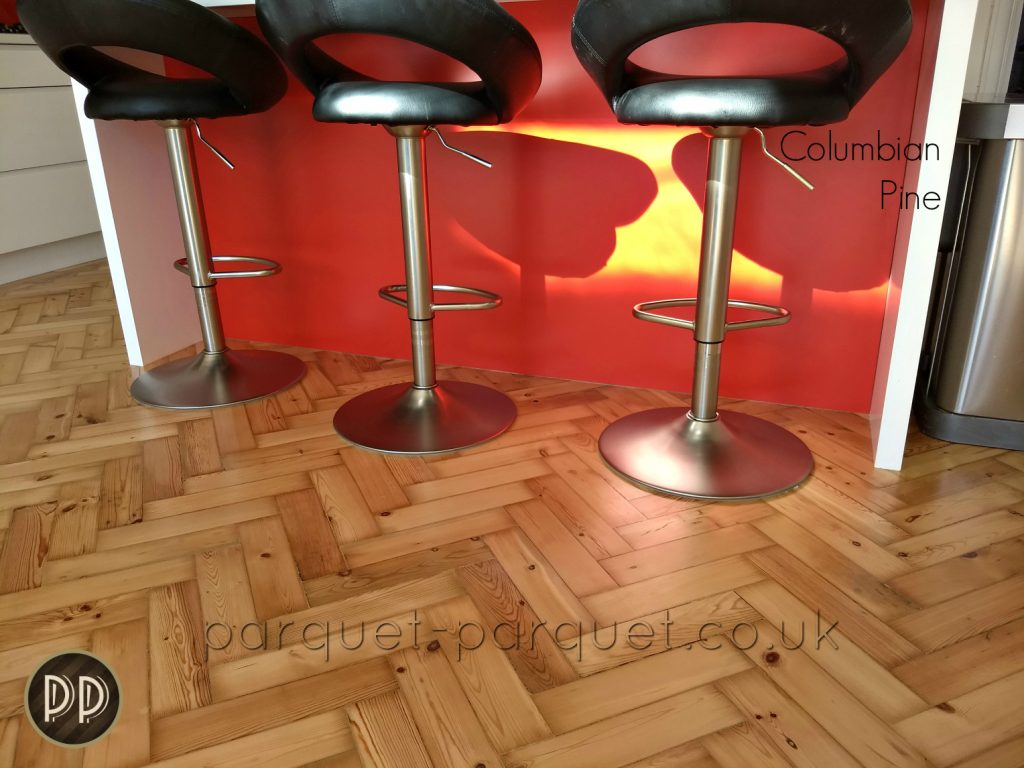
Columbian Pine showing the contrast between modern and old
Reclaimed parquet flooring
Columbian Pine (Pseudotsuga menziesii)
Columbian Pine known as Douglas Fir, as well as Oregon Pine. It refers to British Columbia in Canada. It is an abundant timber, widely grown in North America i.e. Canada and United States. Named after Scottish botanist David Douglas, although the scientific name is for Archibald Menzies, who first described the tree in the 1790s.
The trees grow up to 200 ft ( 60 m), even as high as 300 ft in North America with a diameter of up…
Read More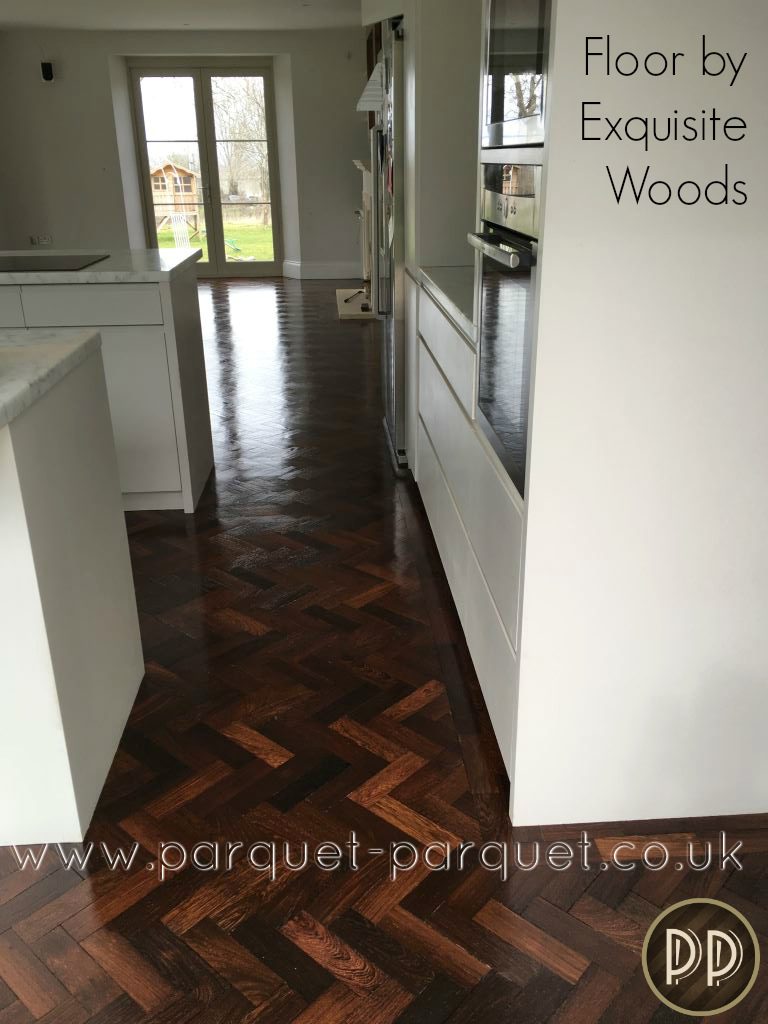
Panga Panga in a kitchen and family room
Reclaimed parquet flooring:
Panga-Panga (Millettia stuhlmannii)
Panga-Panga is from East and South-East Africa (Congo, Kenya, Mozambique, Tanzania, Zimbabwe). This species is sometimes confused with its cousin Wenge (pronounced Wengay). Wenge is very similar in appearance, but grows in West and Central Africa.
When reclaiming parquet in the UK, we tend to find Panga-Panga as opposed to Wenge, because it comes from the parts of Africa that were formerly British colonies. We find it was used in late 1950s and early 1960s buildings. It seems to have…
Read More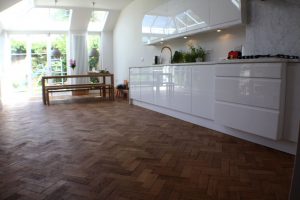
Beautiful Oak floor, with a stunning contrasting kitchen. Yes, indeed you can put parquet in a kitchen!
Read More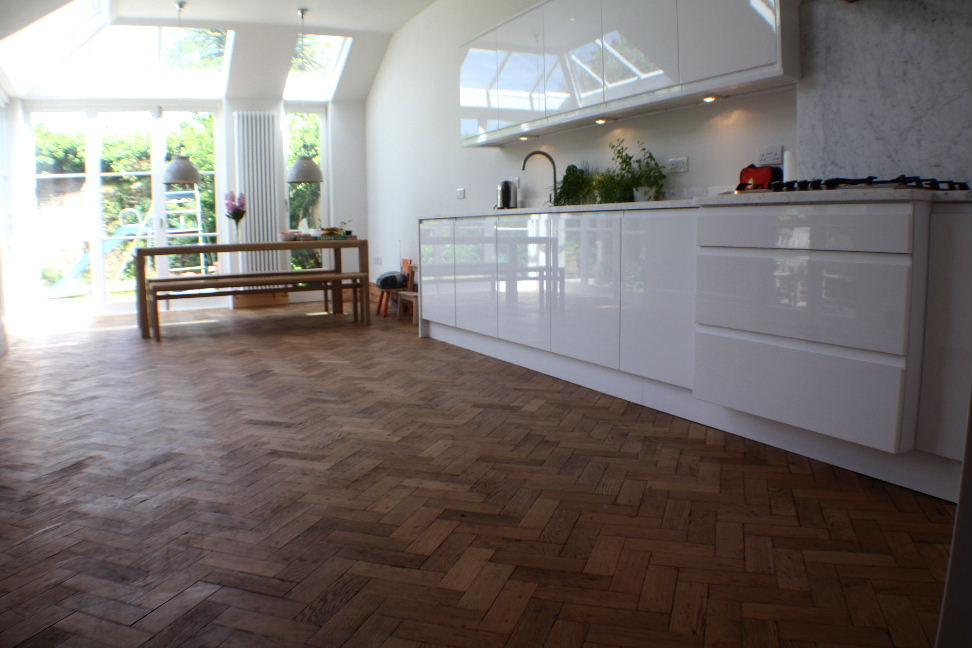
Beautiful Oak floor, with a stunning contrasting kitchen. Yes, indeed you can put parquet in a kitchen!
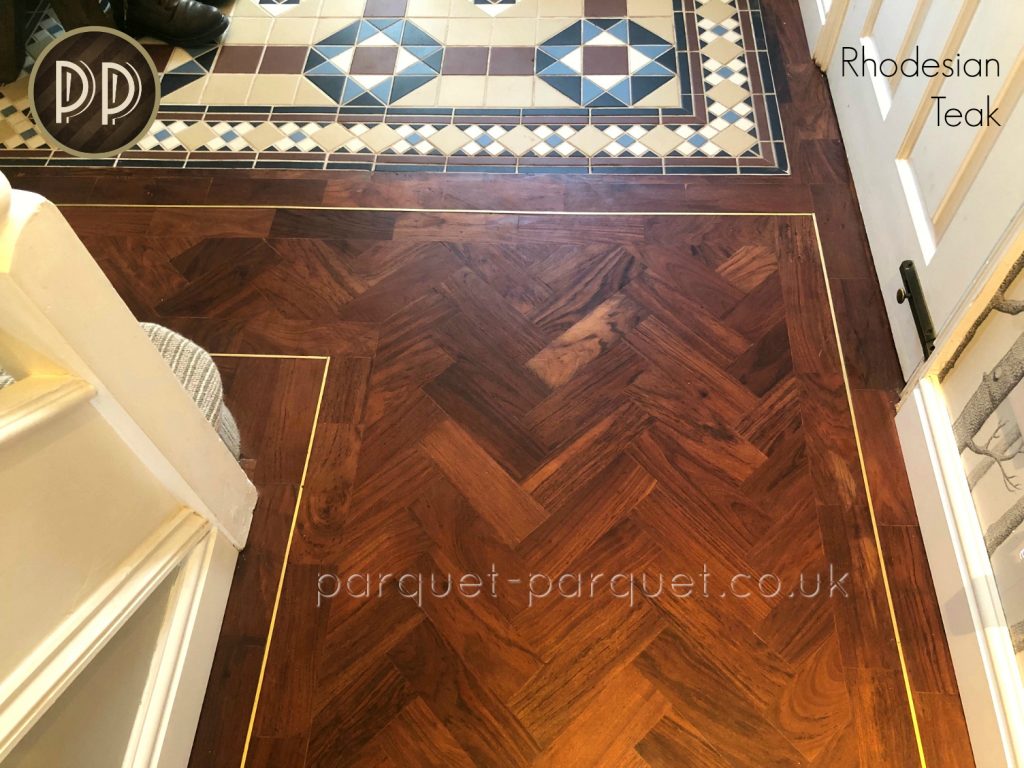
Rhodesian Teak hallway, adjoining ceramic tiles
Rhodesian Teak
Rhodesian Teak (Baikiaea plurijuga) is a very handsome parquet is from Central Southern Africa. Grown in Angola, Botswana, Namibia, South Africa and Zimbabwe. Also known as Gusi and Mukusi as well as Zimbabwe Teak or Zambesi Redwood. It is not true teak (tectona grandis), it is something far better looking.
We find it in buildings dating from the 1920s to 1950s after which it seems to have gone out of parquet fashion. However lately we see it being used a lot, especially commercially,…
Read More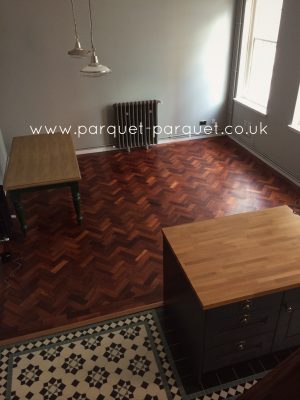
Rhodesian Mahogany beautifully fitted by customer’s builders in Hackney. I love the treatment of abutting the tied kitchen area.
Read More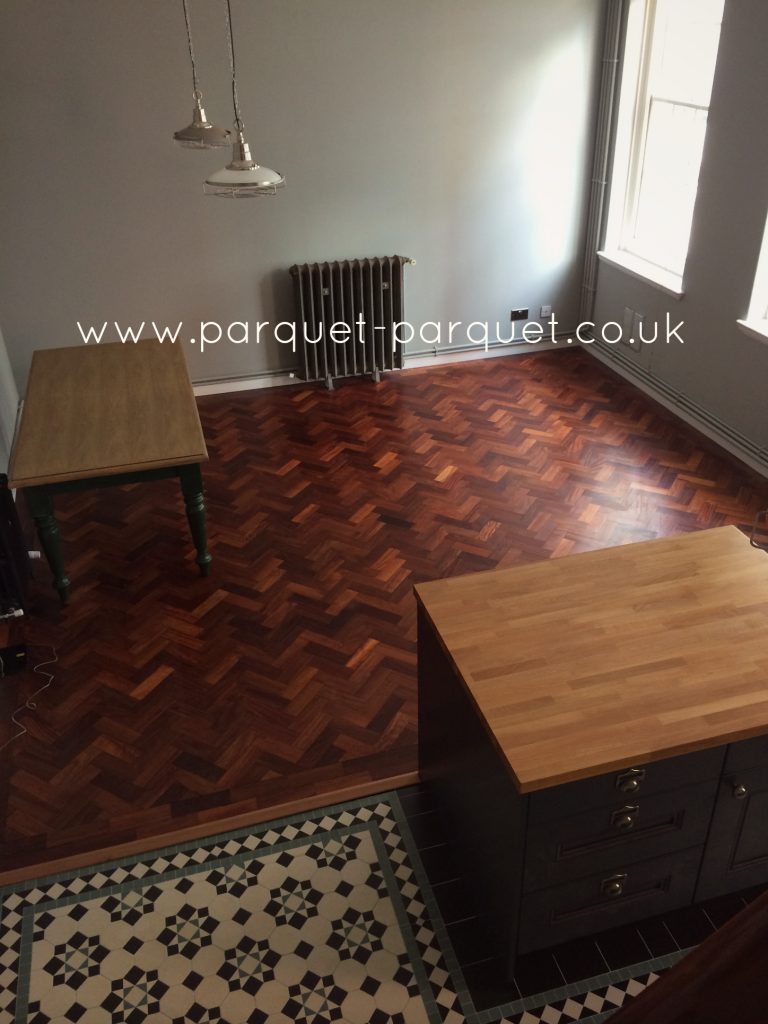
Rhodesian Mahogany beautifully fitted by customer’s builders in Hackney. I love the treatment of abutting the tied kitchen area.
Rhodesian Mahogany
Rhodesian Mahogany (Afzelia quanzensis) is a heavy red mahogany which comes from Eastern and Southern African regions. The countries where it mainly grows are: Kenya, Madagascar, Mozambique, Somalia, South Africa, Zimbabwe and Tanzania. Rhodesian Mahogany has the following trade names: Lucky bean tree, Chanfuta, Chemnen or, our particular favourite, Pod Mahogany. It is now a protected species in South Africa.
Rhodesian Mahogany characteristics
This wood is very heavy and dense and of…
Read More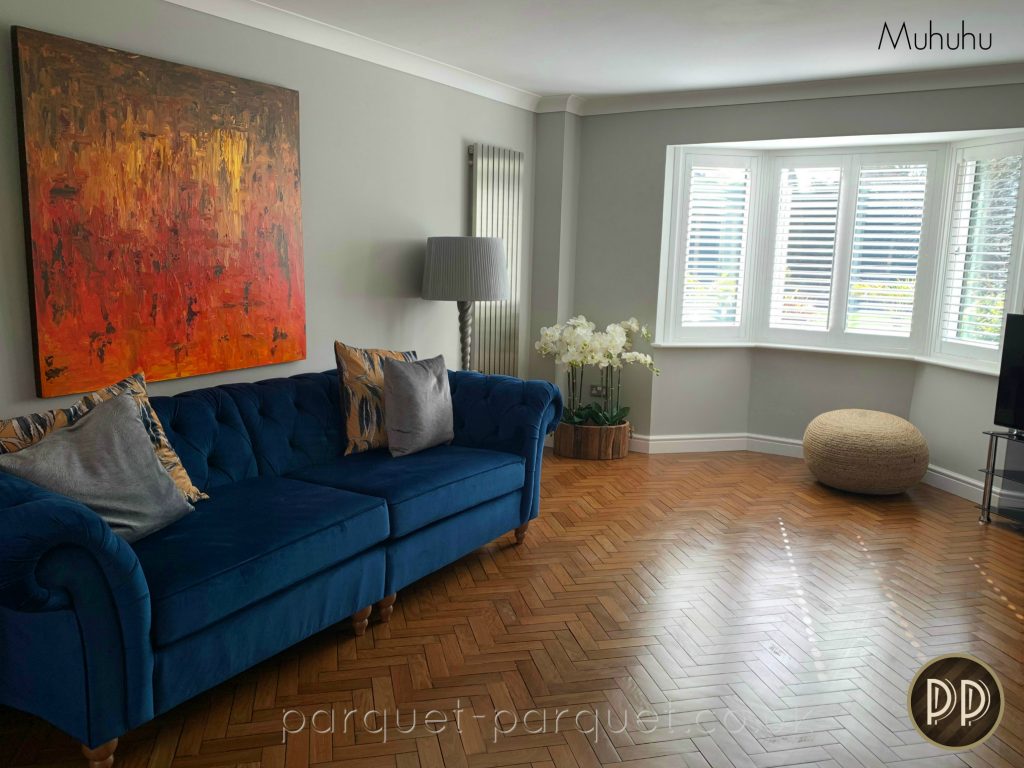
Muhuhu in a sitting room, such a stylish, quality wood type.
Reclaimed parquet flooring
Muhuhu (Brachlaena hutchinsii)
Muhuhu is a species of tropical hardwood from Africa. The main countries of distribution are Kenya, Tanzania and Uganda. In addition the range does extend as far as Angola. Also known as Silver Oak, Muhugwe and Kipugupugo.
This species is on the IUCN Red List and classified ‘Rare’ within its natural growth range in Uganda. Listed as ‘endangered’ due to a tree population reduction of over 50% in the past three generations. A decline in the natural range of growth,…
Read More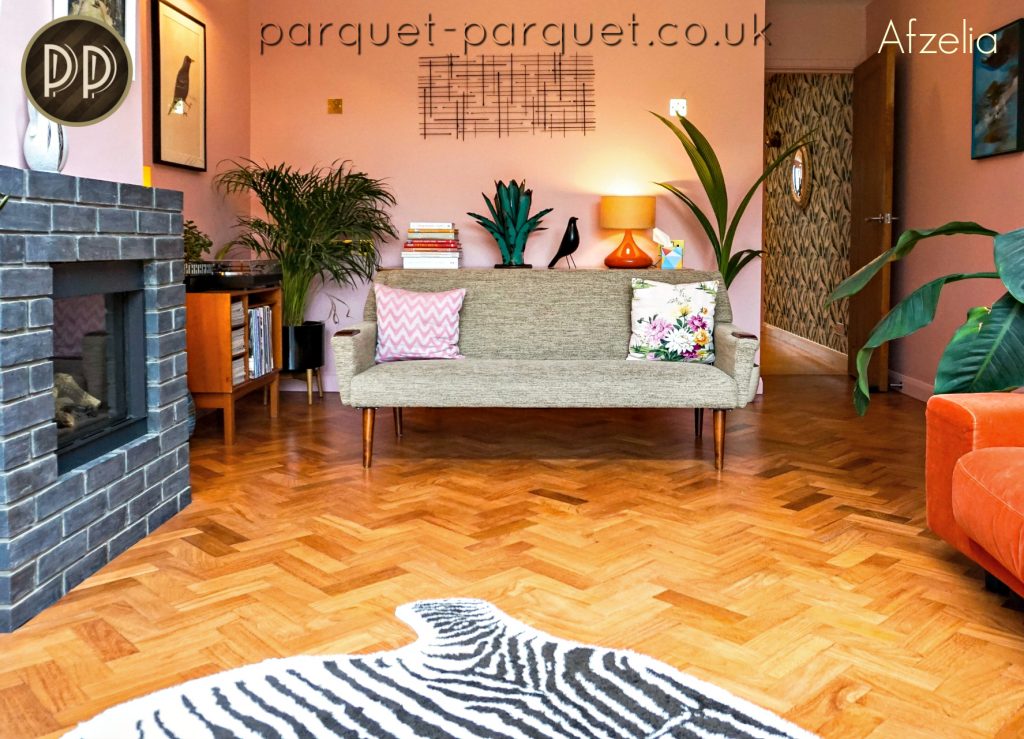
Afzelia working well with bright, bold colours!
Reclaimed parquet flooring
Afzelia (Afzelia africana)
Afzelia Africana is from the family group Afzelia spp. Also known by the trade names of Doussie, Apa, Pau Conta or Lingu. The vernacular names for it are Lucky Bean Tree, African Mahogany and African Oak. This tree comes from an area covering West, Central and East Africa i.e. Cameroon, Central African Republic, Mozambique, Nigeria, Tanzania and Uganda.
Afzelia characteristics
The colour is a reddish pink, sometimes ginger with golden yellow and warm brown tones. The colour will darken a little with age. It has…
Read More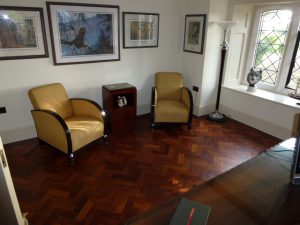
A gorgeous 1930′s house with some of our stunning mahogany parquet installed. It really flatters the furniture and period of building.
Read More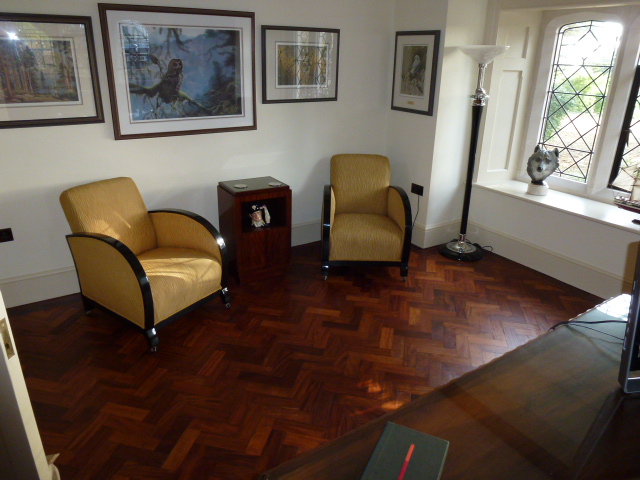
A gorgeous 1930′s house with some of our stunning mahogany parquet installed. It really flatters the furniture and period of building.
Rhodesian Mahogany
Rhodesian Mahogany (Afzelia quanzensis) is a heavy red mahogany which comes from Eastern and Southern African regions. The countries where it mainly grows are: Kenya, Madagascar, Mozambique, Somalia, South Africa, Zimbabwe and Tanzania. Rhodesian Mahogany has the following trade names: Lucky bean tree, Chanfuta, Chemnen or, our particular favourite, Pod Mahogany. It is now a protected species in South Africa.
Rhodesian Mahogany characteristics
This wood is very heavy and dense and of…
Read More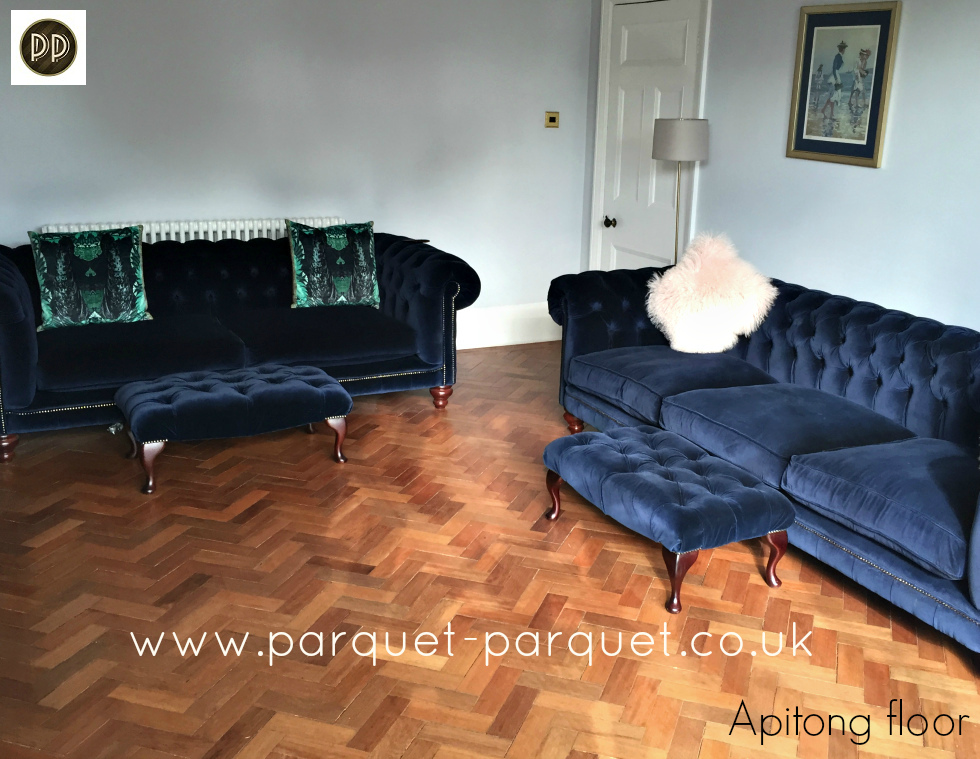
Apitong floor in a drawing room. A simple parquet which can be 'dressed up' beautifully.
Reclaimed parquet flooring:
Apitong (Dipterocarpus spp)
Apitong is from South-East Asia, principally Indonesia, Malaysia and Burma. It belongs to the genus dipterocarpus. There are numerous species within this group, all traded under the name Apitong, as well as others such as Keruing and Lancewood. There are other trade and local names, often depending on the exact origin of the lumber.
This is a robust and very hard-wearing flooring timber which is medium to heavy in weight. The colour ranges quite widely due to the range of species included under…
Read More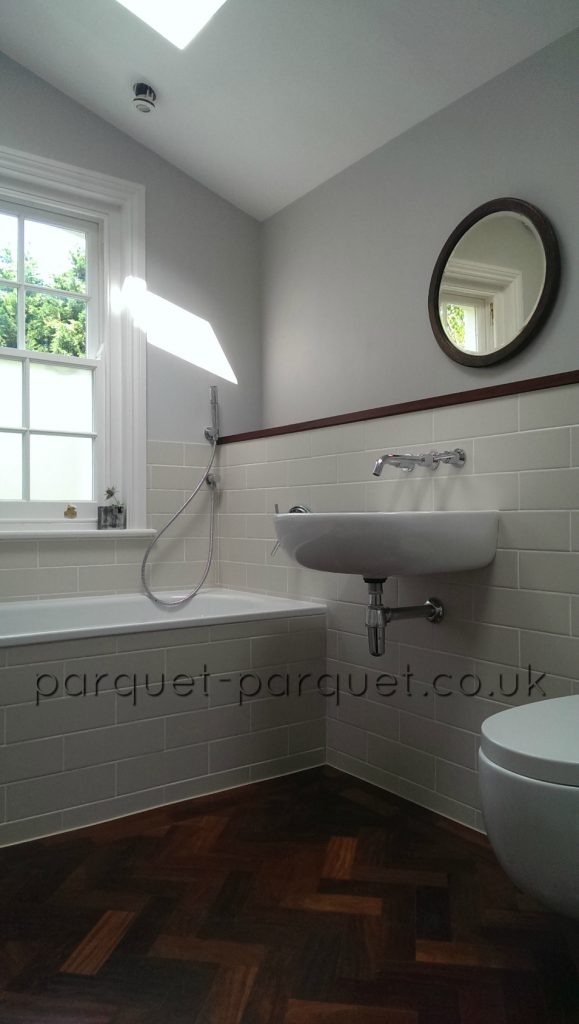
Partridge Wood looking amazing in a bathroom
Reclaimed parquet flooring:
Partridge Wood (Andira Inermis)
Partridge Wood comes from South America, Central America (including the West Indies). As well as from West Africa – Ghana and Nigeria in particular. Rarer and better grown wood types were available during the era of the British Empire. Many of those slow grown species were imported to Britain and this is one of them!
This wood is also known by the name Angelin, West Indian Walnut, Yaba and Cabbage Bark amongst many, many others. It grows to a…
Read More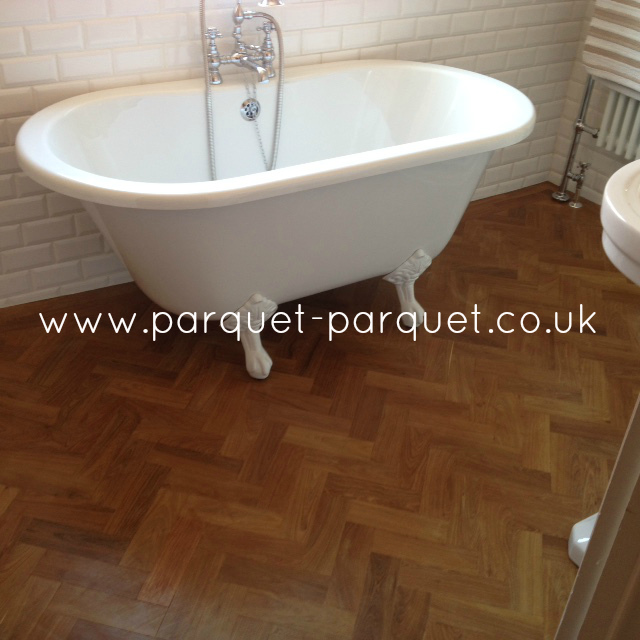
Muhuhu parquet in the bathroom - another location suitable for parquet.
Reclaimed parquet flooring
Muhuhu (Brachlaena hutchinsii)
Muhuhu is a species of tropical hardwood from Africa. The main countries of distribution are Kenya, Tanzania and Uganda. In addition the range does extend as far as Angola. Also known as Silver Oak, Muhugwe and Kipugupugo.
This species is on the IUCN Red List and classified ‘Rare’ within its natural growth range in Uganda. Listed as ‘endangered’ due to a tree population reduction of over 50% in the past three generations. A decline in the natural range of growth,…
Read More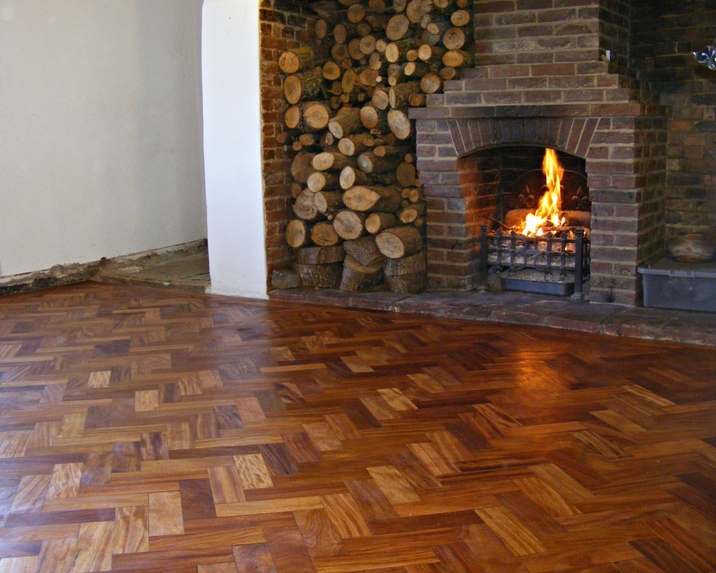
Rhodesian Mahogany floor with cosy fire in an 18th c cottage in Lincolnshire
Rhodesian Mahogany
Rhodesian Mahogany (Afzelia quanzensis) is a heavy red mahogany which comes from Eastern and Southern African regions. The countries where it mainly grows are: Kenya, Madagascar, Mozambique, Somalia, South Africa, Zimbabwe and Tanzania. Rhodesian Mahogany has the following trade names: Lucky bean tree, Chanfuta, Chemnen or, our particular favourite, Pod Mahogany. It is now a protected species in South Africa.
Rhodesian Mahogany characteristics
This wood is very heavy and dense and of…
Read More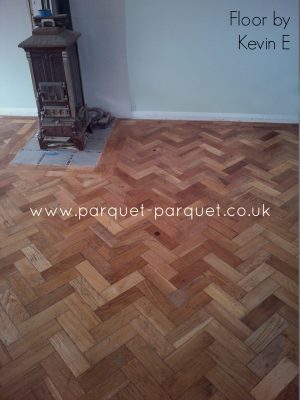
Fab c 1930 rustic English Oak parquet. This shows the range of effects that can be achieved with reclaimed parquet using various species and finishes.
Read More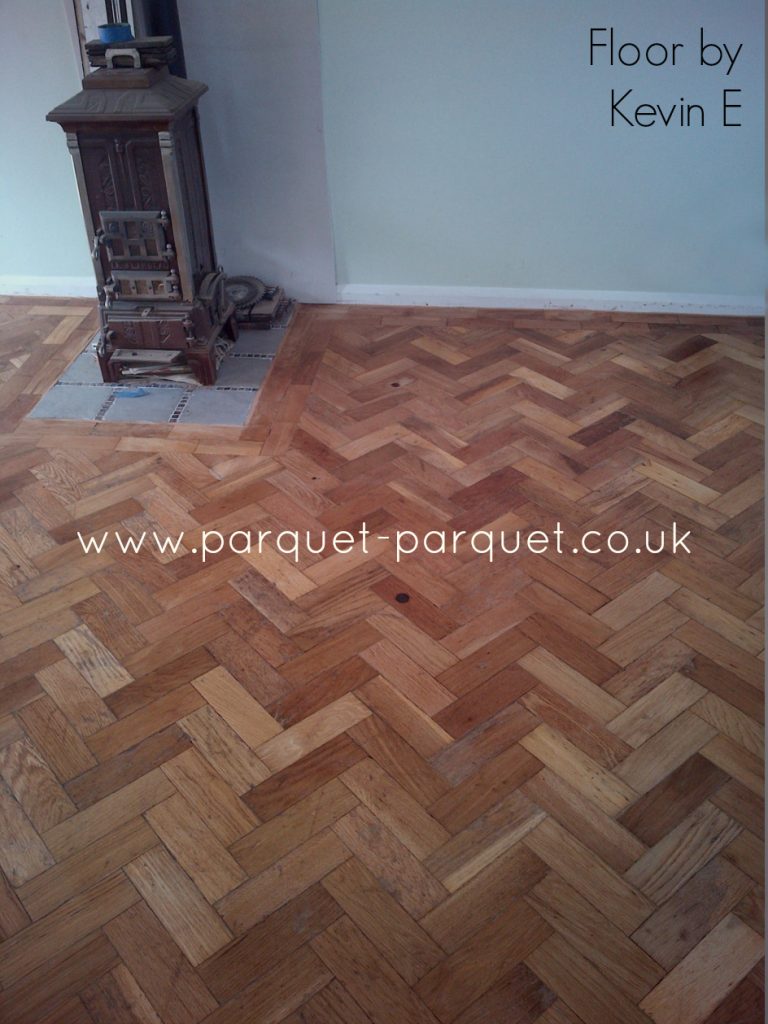
Fab c 1930 rustic English Oak parquet. This shows the range of effects that can be achieved with reclaimed parquet using various species and finishes.
Reclaimed parquet wood block:
European Oak (Quercus robur)
An excellent quality timber, European Oak is a very versatile wood. A Europe-wide species, typically grown in Britain, France and Germany as well as the Balkans. Much of the reclaimed parquet that becomes available will be native to Britain. Old parquet floors will have a lot more character than modern ones. It was traditionally ‘slow-grown’ which is what gives the character and grain so familiar to us, known as English Oak.
Oak Characteristics
The colour of the timber is…
Read More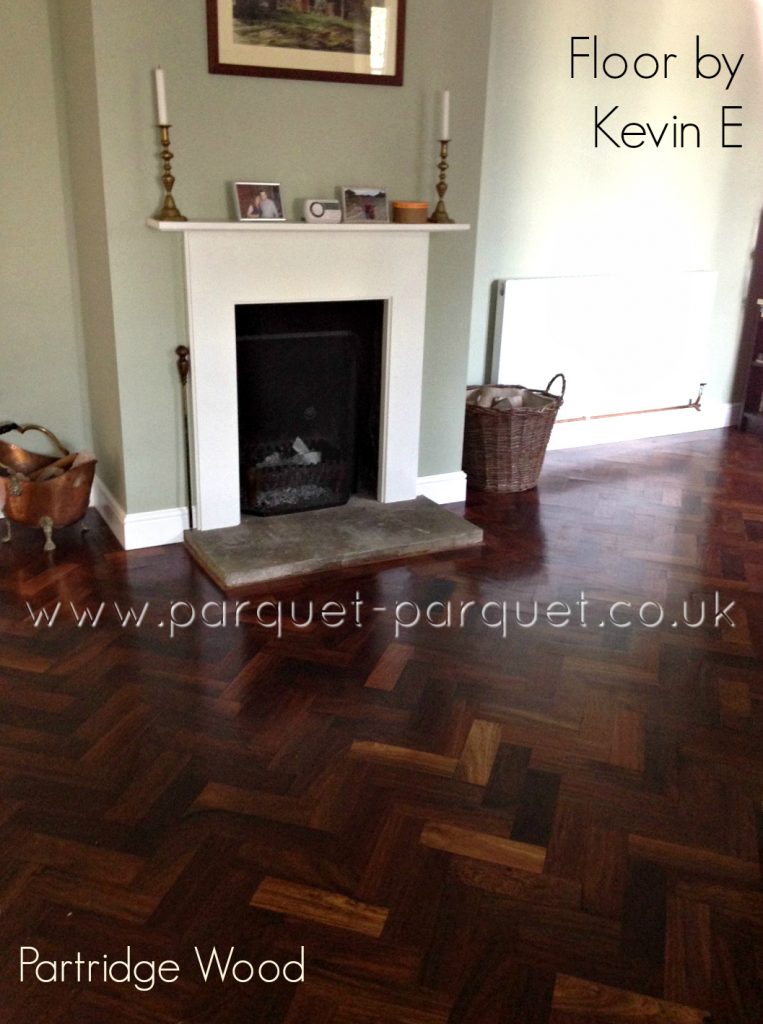
Partridge Wood capturing the essence of reclaimed parquet.
Reclaimed parquet flooring:
Partridge Wood (Andira Inermis)
Partridge Wood comes from South America, Central America (including the West Indies). As well as from West Africa – Ghana and Nigeria in particular. Rarer and better grown wood types were available during the era of the British Empire. Many of those slow grown species were imported to Britain and this is one of them!
This wood is also known by the name Angelin, West Indian Walnut, Yaba and Cabbage Bark amongst many, many others. It grows to a…
Read More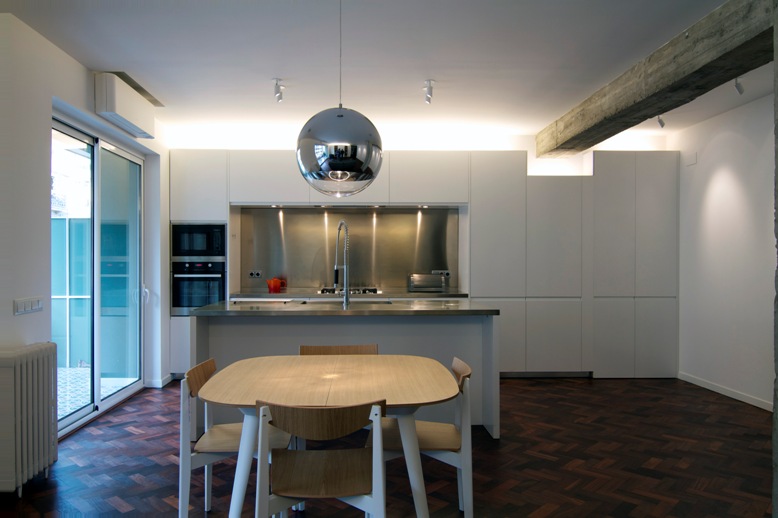
Rhodesian Teak in a Barcelona kitchen c. WS&D Architecture
Rhodesian Teak
Rhodesian Teak (Baikiaea plurijuga) is a very handsome parquet is from Central Southern Africa. Grown in Angola, Botswana, Namibia, South Africa and Zimbabwe. Also known as Gusi and Mukusi as well as Zimbabwe Teak or Zambesi Redwood. It is not true teak (tectona grandis), it is something far better looking.
We find it in buildings dating from the 1920s to 1950s after which it seems to have gone out of parquet fashion. However lately we see it being used a lot, especially commercially,…
Read More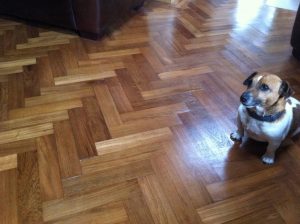
Here we have an irresistible Jack Russell on an equally appealing Burmese Teak floor, photos as provided by our kind clients. As a dog-friendly company, we love to see animals enjoying our floors!
Read More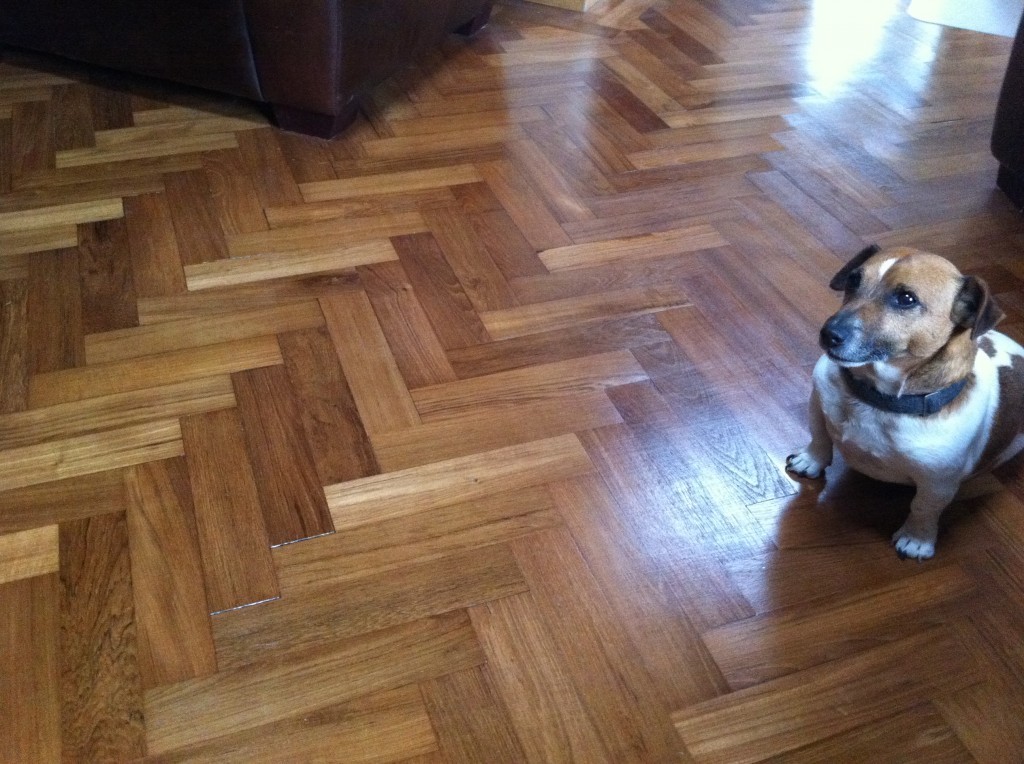
Here we have an irresistible Jack Russell on an equally appealing Burmese Teak floor, photos as provided by our kind clients. As a dog-friendly company, we love to see animals enjoying our floors!
BUY NOW

